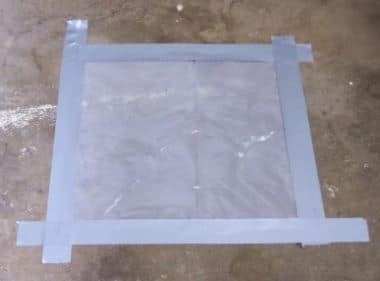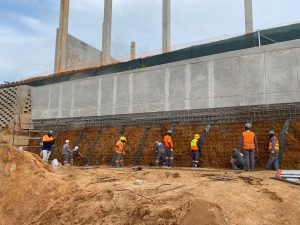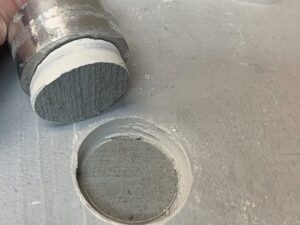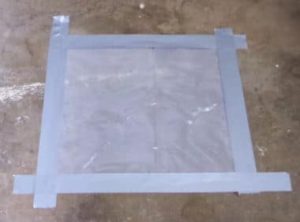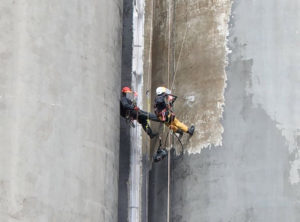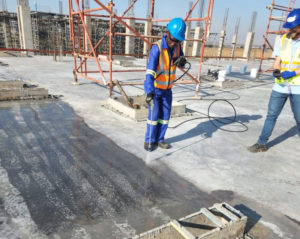By Carl White
Water vapour transmission and condensation look similar. In both instances, water collects on the surface of the concrete. However, it is important to distinguish between water vapour transmission and condensation. This is considering that water vapour transmission can complicate the placement of adhesives, flooring and coatings, potentially delaying your project.
Water vapour transmission and sweating
Water vapour transmission in concrete floors is simply liquid water that rises through the pores of the construction material by capillary action.
Meanwhile, the accumulation of water droplets from the air on a concrete surface is also referred to as sweating. This usually occurs when warm air enters a structure through doors and windows and contacts cooler concrete surfaces. If the concrete surface is at a lower temperature than the dew point, condensation can occur. Condensation usually occurs in new buildings where HVAC systems have not started operating or the doors and windows have not yet been installed. It also occurs in open warehouses with little or no HVAC to control internal temperatures and humidity levels.
Water vapour transmission explained
Water vapour transmission can be differentiated from condensation by performing a simple test. Carefully tape a 500mm x 500mm clear plastic sheet onto a slab that is dry to touch. Ensure that the plastic sheet is taut and lined flat on the concrete surface. Leave the plastic on the slab for three days before removing it for inspection. If water droplets are present on the top of the plastic, or if no moisture is present, the problem is probably condensation. Installing the structure’s windows and doors or operating its HVAC system could solve the problem. If envelope closure and the operation of the HVAC system does not solve the issue, dehumidification or other measures may be required.
Water vapour transmission and SCP
Water vapour transmission will appear as droplets on the underside of the plastic. If this is the case, our colloidal silica post-placement pozzolan technology provides a permanent protection and waterproofing solution. This is in addition to facilitating optimal conditions for concrete curing and the application of flooring in as little as 14 days after concrete placement. In doing so, we help your project’s flooring installation to stay on track and even catch-up previous construction time delays.
Carl White is Managing Director of Spraylock Africa, the African distributor of SCP colloidal silica post-placement pozzolan technology.

